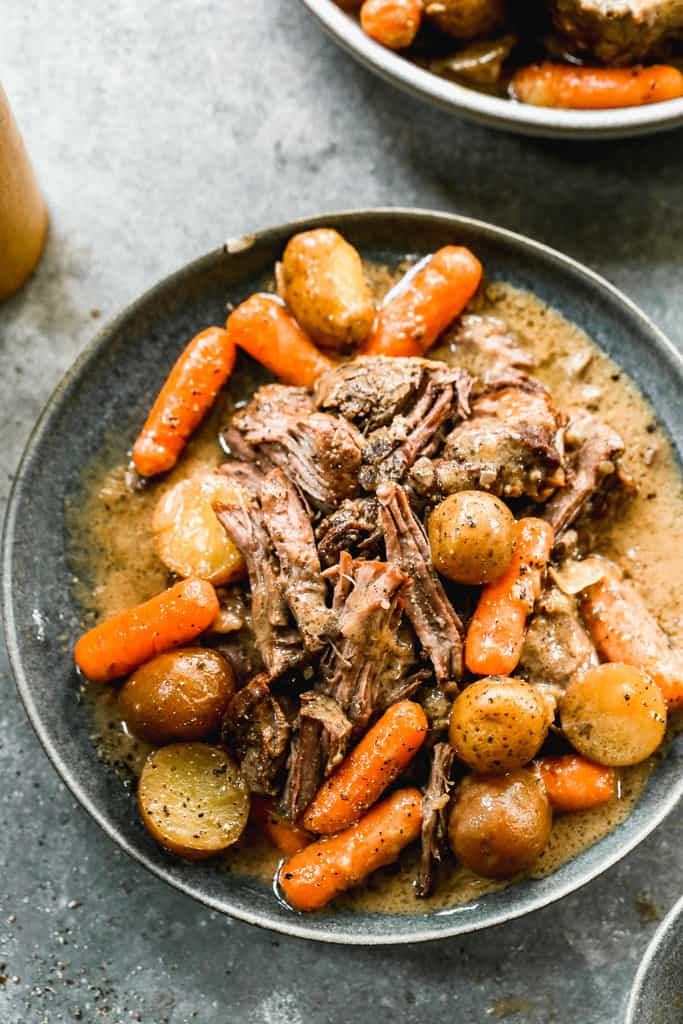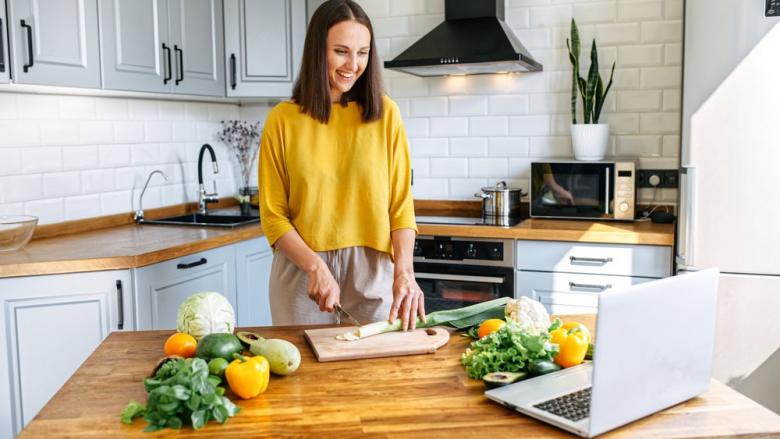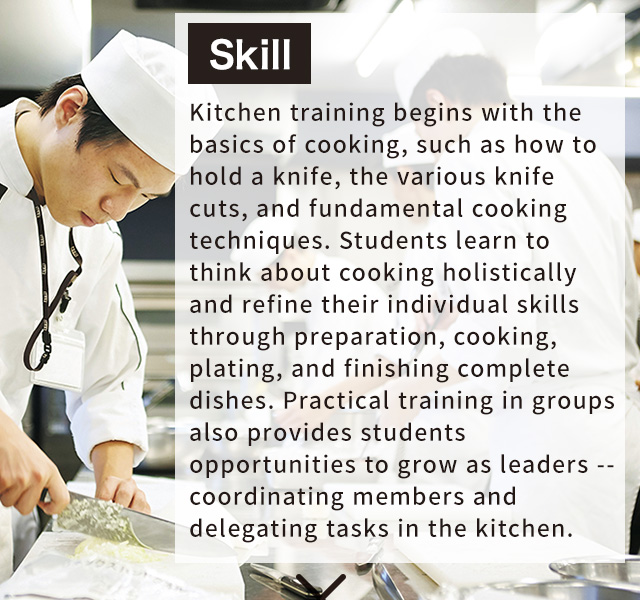
A simple but effective cooking skills checklist should be available for your children. These skills include the ability to create creative recipes and ensure safety in the kitchen. These skills are vital for your child's development. Here are some tips. Here is a sample checklist.
Here are some essential culinary skills
A strong culinary education is not enough. Aspiring chefs must also be able to cook properly. These skills include knowing how to determine the freshness of ingredients and prepare meats, fruits, or vegetables. They also know how to convert standard recipes into larger batches. A chef needs to be skilled in time management and an excellent sense of smell, taste, and smell. In addition, he or she should be able to properly handle knives and food equipment.
Sauteing is a versatile technique that can be used with a variety ingredients. Sauteed shrimp in garlic butter and light sauteed vegetables are delicious. Braising, the oldest form of cooking, is usually done over an open fire. It is a fairly basic skill, but is still very useful. A good cook is someone who can boil a food. It is important to be able to use a knife safely.
Create creative recipes
Creative recipes are essential to your success when cooking a meal. These recipes not only show your creativity but also demonstrate your skills. Creative thinking, also known by divergent thinking allows you to think out of the box to develop new ideas. This is an essential skill for a chef's career. It allows you experiment with new recipes and techniques, which will impress your customers. You can experiment with new flavors and impress your employer by using your creative mind. Think of different flavors, and think up interesting themes. Try brainstorming and researching cooking methods to improve your creativity.

Another problem with defining cooking skills is that they are not consistent. Although they aren't sure which one is more crucial, they agree that the skill definition needs to be updated. They believe that the definition of skill should be derived from the "Golden Age", which was when people were able to cook basic meals. We must support the advancement of these skills in order to ensure that food has a bright future.
Safe cooking in the kitchen
For the safety of your staff, it is important to create a safe space in a commercial kitchen. A kitchen with open fires in the oven, bacteria, and electrical appliances can all be potentially hazardous. Developing a plan for the kitchen's cleanliness and adopting safety equipment are important first steps. Also, make sure that children are supervised in the kitchen. Training employees properly and creating a safety plan are key to avoiding accidents.
Kitchen staff need to be trained in fire safety and fire-resistance. Local fire departments can provide training in fire safety. The kitchen staff should be able to locate fire blankets or fire extinguishers, operate them, and manually start the fire-suppression system. As needed, employees should be trained in CPR and emergency first aid. Kitchens should have nonslip flooring.
How to identify food safety hazards
Identifying food safety hazards is an essential part of your overall safety program, whether you are preparing a meal for your family or catering for a special occasion. It is essential to identify possible hazards when preparing food. Failing to identify potential hazards can lead to brand damage and regulatory action. Food businesses must adhere to Codex HACCP. Identifying hazards is an essential requirement.

There are many potential physical hazards that can inflict injury on humans. They can either be natural or manufactured and can also come from packaging or individuals. Different physical hazards have different probability of causing disease or injury. These hazards do not have to be dangerous. However, they should be recognized and eradicated before they cause injury. To identify potential hazards, identify the source of the risk and determine how to minimize it. You can also look for the source of the risk by observing the product.
FAQ
Where can I buy good quality kitchen equipment?
High-quality kitchen equipment can be purchased online. There are many websites where you can shop for all kitchen tools. Before you purchase any kitchen equipment, ensure that you have read all reviews and rated it before buying. You can ask others who have the same items for their recommendations.
How much does it cost for you to learn culinary arts?
It is not easy to find a culinary arts degree that costs less than $40,000. For example, a 4-year degree costs about $40,000. A two-year associate's level degree can cost less than $5,000. Tuition rates vary depending on what program you choose. The prices charged by private institutions are generally higher than the public.
What should a beginner cook start with?
A beginner should start cooking something easy, like pasta, rice, or soup. If you want to learn how to cook, go for a recipe book or YouTube video. Cooking can be fun when done with a partner. Cooking together is fun with family members or friends.
How do I get hired as a chef?
You must complete a degree in culinary arts to be able to apply for a job at the table as a professional chef. Next, you should join a professional association such as the American Culinary Federation (ACF). This organization offers certification exams and networking opportunities.
Where can I find free online cooking lessons?
Many websites offer free cooking classes. YouTube offers many videos on how to cook various meals. Some sites offer thousands of recipe options. You will need to pay a monthly subscription, but you can still try the site for free for 30 day.
Statistics
- In the United States, the category is estimated at $23.2 billion annually and is growing faster than the market. (washingtonpost.com)
- You'll be amazed that over 90% of CIA students receive scholarships and grants to finish their culinary studies. (ischoolconnect.com)
- The median pay for a chef or head cook is $53,380 per year or $25.66/hour, according to the U.S. Bureau of Labor Statistics (BLS). (learnhowtobecome.org)
External Links
How To
How to make a perfect omelet
Omelets are one of my favorite foods to eat at breakfast. How can you make them perfectly? I've tried many different methods and recipes, but none of them seem to work! So I am sharing some tips and tricks today to help you make fluffy, delicious omelets every morning.
Before we start making omelets, let's remember that eggs are temperamental. You must get them fresh, organically, and keep them cold until you cook. If they are not kept cold enough, the whites won’t form properly. The yolks will also break down too quickly and become runny. This will make your omelets appear strangely colored. If you plan to cook the eggs right away, it is best to use room temperature eggs.
Another tip is to separate each egg before adding them to the saucepan. You don't want any white to get mixed up with the yolk because this could cause the omelet to curdle.
The bottom part of an egg that is added directly to the stovetop might be burned, which could cause a ruined texture in your omelet. Instead, microwave the egg for 10 seconds before adding it to the pan. The microwave heat will cook the egg just right without making it too hot.
Next, let's discuss mixing the eggs. Mix eggs well together. To do this, grab the bowl of the mixer and turn it upside down. Next, shake the bowl vigorously. This will whip the air around the bowl and mix the egg well.
Now comes the fun part: adding the milk to your mixture. First, pour half of the milk into the beaten eggs and then fold the eggs gently into the remaining milk. You don't need to worry if streaks remain. They will disappear once you flip your omelet.
After you have folded the eggs, heat the oil in a pan over medium heat. Once the oil has started to sizzle, turn the heat down to low. When the oil is hot enough, add 1/4 cup butter to the pan. Stir it around until the butter covers the entire pan. The lid should be carefully opened. Sprinkle salt in the pan. An additional pinch of salt will prevent the omelet form sticking to your pan.
Cover the pan once the omelet is formed and allow it to cool completely. Flip the omelet upside down or with a spatula. Cook the other half for another minute. Serve immediately after removing the omelet from its pan.
This recipe works best with whole milk, but skimmed milk also works.